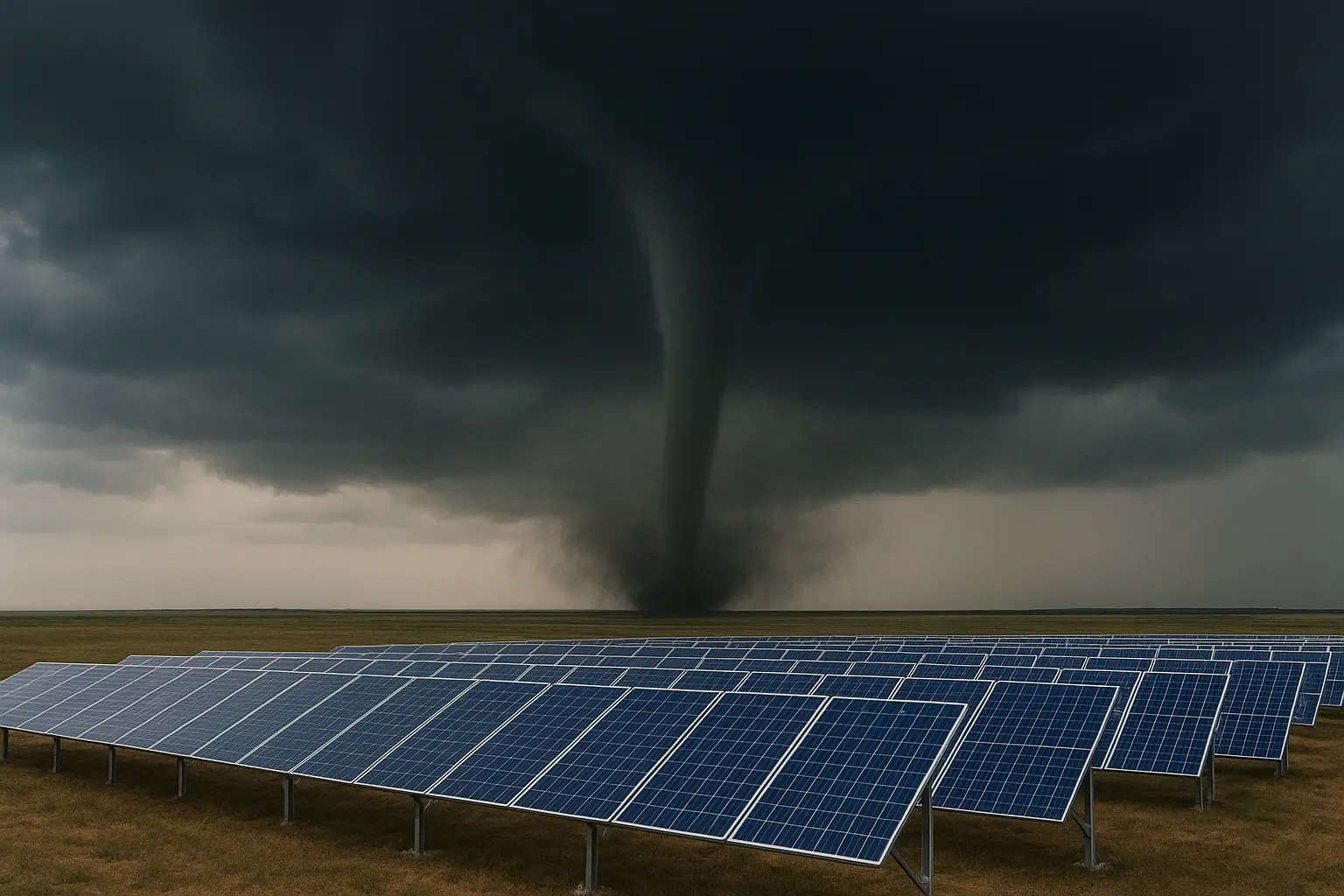No, solar panels do not create tornadoes.Scientists have looked into it, fact-checkers have debunked it, and renewable energy experts have explained why this theory does not quite blow—it has no wind.
Where Did the Tornado Theory Come From?
This was first made in a 2024 Facebook post that described solar farms as "tornado incubators" and "thunderstorm magnets." The author, a self-described retired aerospace engineer, speculated that heat from solar panels could cause local atmospheric instability—tornadoes.
Sounds far-fetched, doesn't it? The catch: it's completely false.
Research conducted by fact-checking websites like Snopes found no scientific proof that solar panels would alter the weather in this way. Even the author's credentials could not be verified.
So now why does the myth persist? Probably because it is easier to explain the unexplained—like severe weather—to something that can be visualized—like a shiny solar array.
What Actually Causes Tornadoes
Tornadoes require very particular atmospheric conditions:
- Warm, moist air near the ground
- Cold, dry air higher up
- Strong wind shear, meaning winds change direction and speed with altitude
- Thunderstorm activity to create rotation
That’s a complex recipe—one that takes miles of moving air and enormous energy shifts. A solar farm or solar container system covers only a few acres and produces a negligible heat difference, similar to what you’d feel standing on asphalt in a parking lot.
In fact, University of Colorado Boulder Renewable and Sustainable Energy Institute senior research associate Dr. Chuck Kutscher said it most succinctly:
“The heat from solar farms is tiny compared to what’s needed to form a thunderstorm or tornado. It’s like comparing a match flame to a campfire.”
Solar Farms and the “Urban Heat Island” Effect
True, solar panels do take in sunlight, and yes, they will heat the air around them slightly. But that phenomenon, known as the urban heat island effect, is the same one cities experience due to dark rooftops and asphalt roads.
Does it indicate that cities create tornadoes? Of course not.
The minor temperature swings caused by solar farms are in no way powerful enough to alter local climate conditions. Meteorologists compare it to "a couple of degrees of local variation," not the large-scale convection currents that create storms.
Then Why Do Some Folks Believe That Solar Farms Are Unpleasant?
Partly, it's because renewable energy is spreading so quickly, and people always worry about any major change. When vast expanses of panels appear on the rural landscape, they may appear mysterious—or even ominous—to the country folk who don't know the technology.
Partly, though, fear comes from overestimating simple physics. For example:
- Blackbody radiation — Solar panels release heat into the air as a blackbody, causing temperatures to fluctuate according to some blogs. Actually, that is a misuse of the term. Blackbody radiation describes how hot bodies emit light, not how solar farms heat up the atmosphere.
- "Energy imbalance" — Some argue that absorbing sun light changes local weather. But all of human infrastructure—from highways to buildings—does that on some scale. Solar panels are no different, just cleaner and more efficient.
The Actual Threat: Tornadoes Damaging Solar Farms
Ironically, the reverse is true of the rumor: solar farms and solar containers are at greater risk from tornadoes than that of creating them.
Powerful winds and airborne objects may destroy panels, warp mounting racks, or impair inverter systems. That is why modern designs, like LZY Energy's solar container modules, have reinforced frames and wind-rated mounting systems.
Examples include:
It was a tornado in Arkansas in 2023 that ruined parts of a big solar installation, but engineers noted nearby panels that survived displayed extreme durability.
LZY Energy's solar containers are built to survive Category 4 hurricane-force winds, providing off-grid power in the most difficult conditions.
No, we don't call down storms—but we're certainly prepared to weather them.
Solar Containers: Built for the Elements, Not Against Them
LZY Energy's solar container solutions combine high-performance monocrystalline panels, lithium iron phosphate (LiFePO4) batteries, and integrated inverters in one, relocatable package. They're built for:
- Extreme weather reliability
- Rapid deployment for disaster recovery or off-grid areas
- Energy independence with zero emissions
Rather than destabilizing the climate, these systems help stabilize society—powering hospitals, communications, and independent facilities when the grid fails.
So, What’s the Real Environmental Impact?
Solar power, including solar container systems, really brakes the conditions that create intense weather in the long term. By limiting greenhouse gases, it brakes climate change—a leading cause of more intense, frequent storms.
That is, solar panels fight the real culprit behind tornadoes (climate instability), and they do not produce them.

